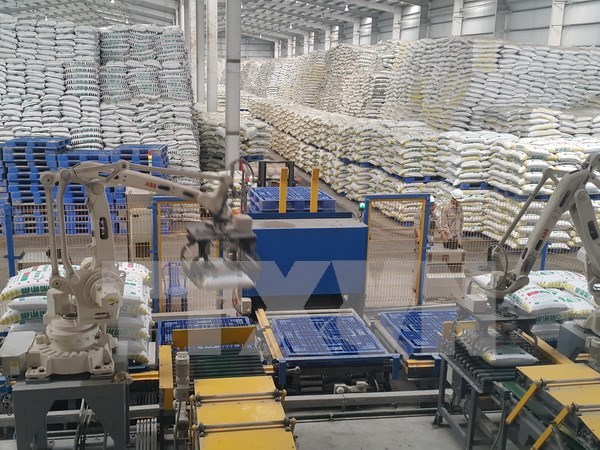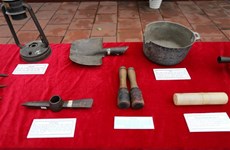Trade liberalisation of fertilizser impacts rural labour
Trade liberalisation policies, as indicated by the increased use of chemical fertilizers, have significant effects on labour reallocation in the rural parts of Vietnam.
 A fertiliser manufacturing plant (Photo: VNA)
A fertiliser manufacturing plant (Photo: VNA)Doctor Hoang Xuan Trung from the Institute for European Studies under the Vietnam Academy of Social Sciences revealed the analysis on June 14 as part of the Vietnam Living Standards Surveys conducted by a group of local and European researchers.
He said the trade liberalisation of fertilizers encourages increased labour (number of people and hours) in the agricultural sector, but results in a decrease in the non-agricultural sector.
The percentage of rural households participating only in farm activities has been decreasing over time, from 66.33 percent in 1993 to 57.25 percent in 1998 due to increased urbanisation and industrialisation.
However, the percentage of rural households engaged in both farm and non-farm activities increased during the same period, from nearly 21 percent in 1993 to almost 25 percent in 1998, suggesting that rural households are increasingly diversifying their revenue streams.
The researchers found that an increased volume in the use of chemical fertilizers leads to increased involvement of rural households in agriculture. More specifically, a 10 percent increase in the volume of chemical fertilizers decreases by 0.021 the number of household members participating in non-farm activities and reduces the number of non-farm working hours per week by 1.08.
Increased use of chemical fertilizers also increases the use of organic fertilizers (a 10 percent increase in volume of chemical fertiliser correlates with a 5.42 percent increase in volume of organic ones).
The price of chemical fertilizers has a greater effect on farm participation in households that moved into agriculture between 1993 and 1998 than in those that were already farming in 1993.
The liberalisation of chemical fertilizers provides more on-farm labour opportunities for small holders than it does for owners of larger farms, because small holders tend to have a surplus of on-farm family labour.
With more than 70 percent of the population living in rural areas and depending on agriculture for their livelihoods, the potential effects of trade liberalistion on labour reallocation should be considered carefully, Trung said.
He suggested strongly reducing tax on intermediary products such as machines, equipment and technologies, while simplifying administrative procedures to reduce production costs and increase domestic competitiveness.
He suggested the Government provide more support in vocational training to facilitate the transition of labour between sectors as an impact of the Trans-Pacific Partnership (TPP) agreement.-VNA













